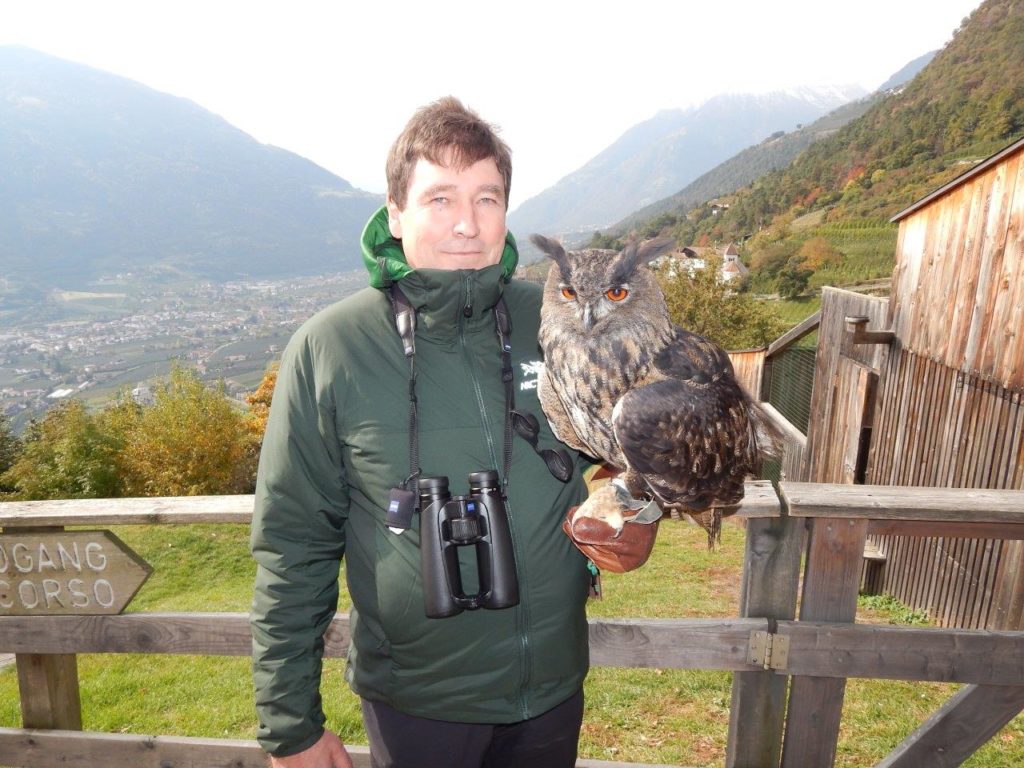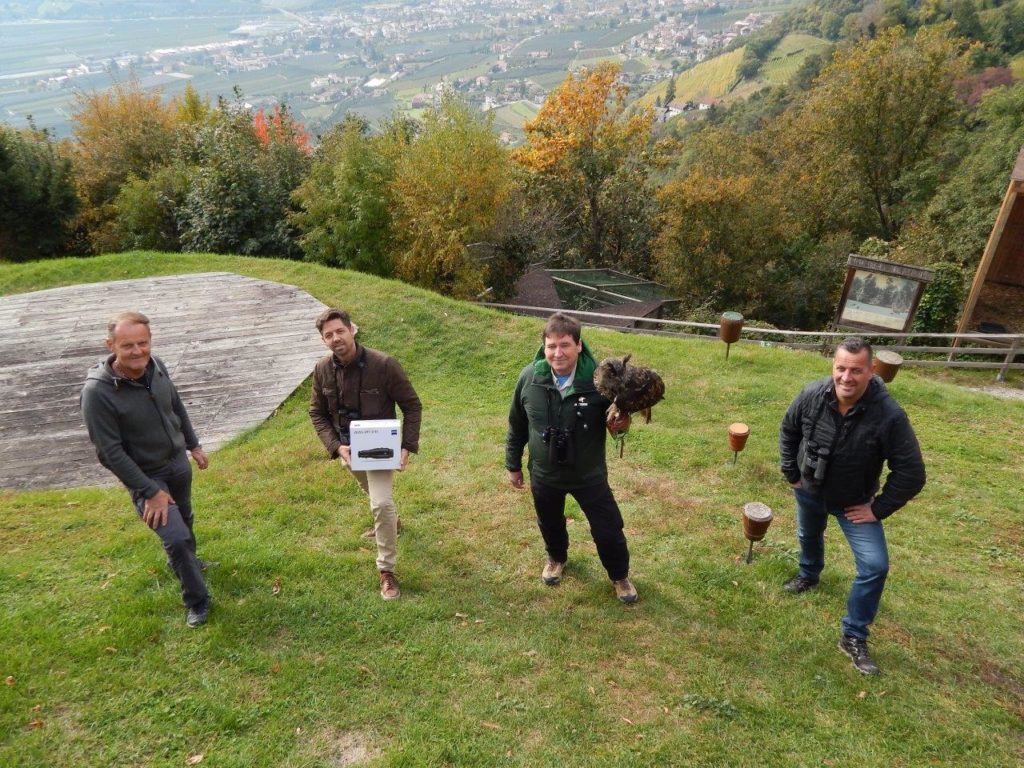According to the EU Birds Directive, the eagle-owl enjoys the highest conservation status. “However, the population has been decreasing over the past few years in the Meran valley basin that we have been monitoring,” explain ornithologists Florian Gamper and Willy Campei from the avifauna care center at Castle Tyrol. Now the center wants to intensify and professionalize its research activities, so it brought the German company ZEISS on board. The global leader in the field of optics and optoelectronics has made a special thermal imaging camera available to the care center via the Italian general importer Bignami from Auer that can also provide detailed images of the eagle-owls at night.
“Up until now, we were only able to observe the eagle-owls with a night-vision device,” explain Gamper and Campei, who together run the avifauna care center at Castle Tyrol. “The new thermal imaging camera from ZEISS will now add a new level of quality to our research, which is being conducted in close collaboration with the University of Munich.” Dr. Gerold Dobler (Carl Zeiss AG), as well as Dr. Achille Berti and Andy De Santis (Bignami) recently presented the two South Tyrolean ornithologists with the ZEISS DTI 3/35 thermal imaging camera – and inquired about the ongoing observation activities on site during one of the daily flight demonstrations.
Only 30 years ago, the Eurasian eagle-owl was considered critically endangered in South Tyrol. “Around the turn of the millennium, the population then stabilized,” Gamper and Campei explain. “In the meantime, however, we must sadly note that the risk has increased again. The number of breeding pairs is still somewhat stable, but breeding activities are declining – in other words, the number of fledglings being born is decreasing.” The ornithologists have already identified one cause: the power lines. Now they want to more closely examine whether the increasing use of hail netting is having an effect on the eagle-owl population.
Equipped with the new, high-resolution ZEISS thermal imaging camera, the two ornithologists will now be able to monitor the eagle-owls even more closely, especially those active at night, while in the following breeding and hunting grounds: on the border between Algund and Meran-Gratsch and around Brunnenburg (Tyrol), in the area around Töllgraben between Partschins and Algund, in the “Grammegg” area (Partschins, Marling, and Algund), and in the “Happichl” area (Partschins). In addition to conducting research, the care center is also planning various measures to raise public awareness.

